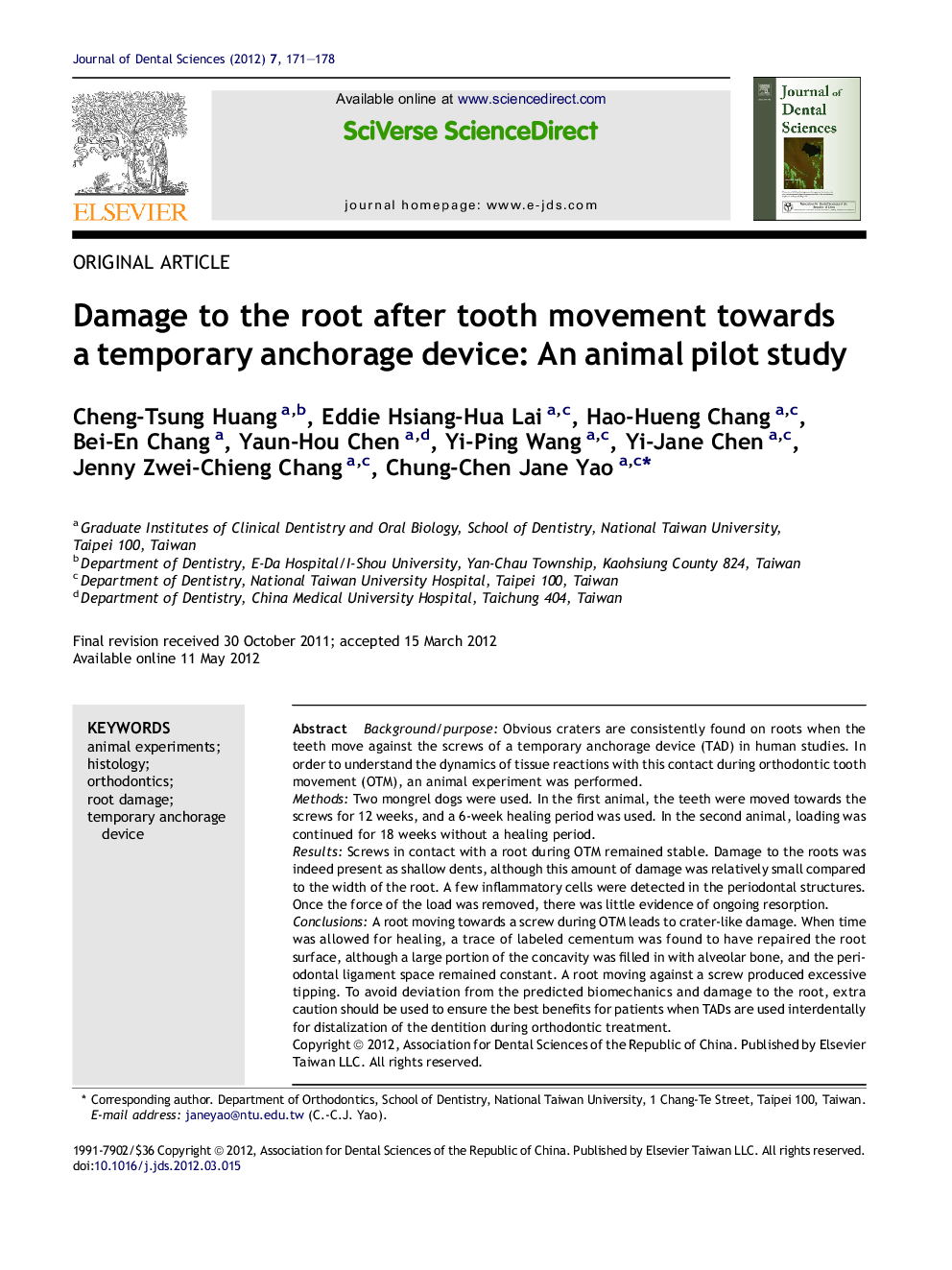| Article ID | Journal | Published Year | Pages | File Type |
|---|---|---|---|---|
| 3144806 | Journal of Dental Sciences | 2012 | 8 Pages |
Background/purposeObvious craters are consistently found on roots when the teeth move against the screws of a temporary anchorage device (TAD) in human studies. In order to understand the dynamics of tissue reactions with this contact during orthodontic tooth movement (OTM), an animal experiment was performed.MethodsTwo mongrel dogs were used. In the first animal, the teeth were moved towards the screws for 12 weeks, and a 6-week healing period was used. In the second animal, loading was continued for 18 weeks without a healing period.ResultsScrews in contact with a root during OTM remained stable. Damage to the roots was indeed present as shallow dents, although this amount of damage was relatively small compared to the width of the root. A few inflammatory cells were detected in the periodontal structures. Once the force of the load was removed, there was little evidence of ongoing resorption.ConclusionsA root moving towards a screw during OTM leads to crater-like damage. When time was allowed for healing, a trace of labeled cementum was found to have repaired the root surface, although a large portion of the concavity was filled in with alveolar bone, and the periodontal ligament space remained constant. A root moving against a screw produced excessive tipping. To avoid deviation from the predicted biomechanics and damage to the root, extra caution should be used to ensure the best benefits for patients when TADs are used interdentally for distalization of the dentition during orthodontic treatment.
